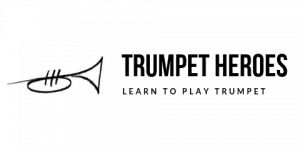This page exists here (on TrumpetHeroes.com) for a couple of reasons: a lot of young Baritone players are draftees from the Trumpet section and there’s a lot of similarities between how Trumpets and Baritones work and how beginning players get better at playing them. A fellow band teacher pointed out that their Baritone TC players were already using TrumpetHeroes warm-ups etc and the Baritone BC players wanted me to write some things out in Bass Clef for them.
What’s this Baritone TC vs Baritone BC business anyway? TC refers to Treble Clef and BC means Bass Clef. Let’s say that this situation exists as an accident of music history … nobody needs to take the blame. To be honest, if I had a student who came in the door with no experience in either clef but really wanted to play the Baritone, I’d probably encourage them to start in Bass Clef. That’s likely to open some musical doors (like a later switch to Trombone for Jazz Band, an upgrade to Euphonium in advanced groups, some Euphonium/Baritone method books than lean hard towards Bass Clef etc) later on. If, on the other hand, that student was a Trumpet player who had a decent grasp on the Treble Clef and how to get around it I’d likely offer them the easier startup in Treble Clef.
Generally speaking, and always at the beginning level TC and BC parts sound identical. They just look different in one clef than in the other. There’s another important difference – the note names are different. This is why it matters which parts the player is reading. Baritone BC parts are written in concert pitch (like Trombone, Tuba and Flute parts) and Baritone TC parts are written in Bb (like Trumpet and Clarinet parts)*. If a player who’s used to one kind ends up looking at the other kind they’d have to read it in the other clef and change all of the notes either up or down a step – thats’s called transposing and it can be tricky. That’s why we’re here.
If you read Baritone TC parts and you like it like that then almost everything on TrumpetHeroes.com will makes sense to you and work for you. Definitely make the Warm-ups a part of your daily routine. Any mechanical advice applies directly to you as well.
If you read Baritone BC parts I’m working on getting some material written out for you. There are some DRAFT Warm-ups on THIS OTHER POST just to get things started (DRAFT meaning there could be mistakes and imperfections. I have some students using them and telling me what needs fixing). There are videos on YouTube of me playing the Warm-ups on Trumpet and you can play along with them. Know that any note-names I use are a step above what you think they are … so If I say “C”, you need to hear “Bb”. If there seems to be a burning need for them I’ll make some videos on Baritone but that shouldn’t be necessary – Band kids are smart, right?
If you’re playing a Euphonium or a Valve Trombone this material will work for you too. Get going on the Warm-Ups for sure!
*[There are some other brass instruments that have parts written in other keys but we’ll leave them out of this for now. If you’re a French Horn player and starting to pout – you’re next … but I’m slow.]
